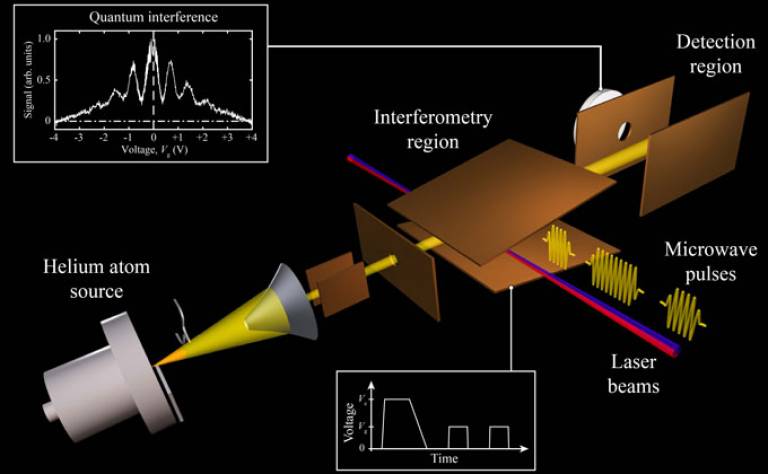Quantum interference of 'giant' 300-nanometer-sized atoms
12 July 2019
A new method to study quantum interference of highly excited atoms.

Researchers James Palmer and Stephen Hogan in the Department of Physics and Astronomy at UCL have developed a new method to study quantum interference of highly excited atoms. In this work, Palmer and Hogan used pulses of microwave radiation to prepare quantum superpositions of internal atomic energy levels in helium. The interactions of these internal superposition states with pulsed inhomogeneous electric fields were then exploited to split individual atom waves into pairs of spatially separated components, and allow the observation of quantum interference between them. Because the helium atoms used in the experiments were prepared in highly excited internal energy levels, the atoms had dimensions of 300 nanometers. This new approach to observing quantum interference with such 'giant' atoms has applications in quantum sensing, measurements of antimatter gravity, and studies of quantum mechanics in the classical limit.
You can read the full paper on the PRL website at https://journals.aps.org/prl/abstract/10.1103/PhysRevLett.122.250404
IMAGE CAPTION: Schematic diagram of the experimental apparatus. Credit: Stephen Hogan.
 Close
Close

